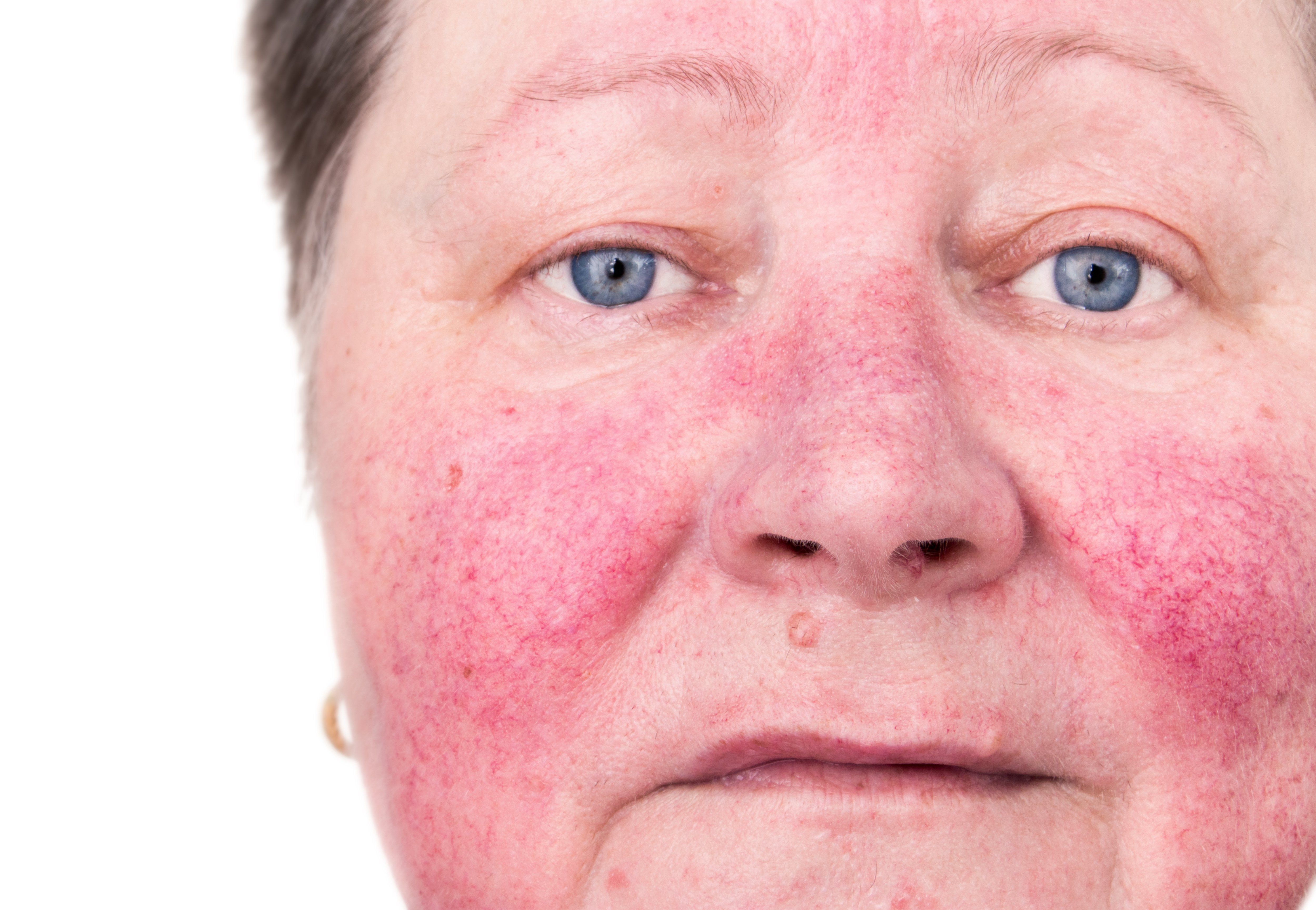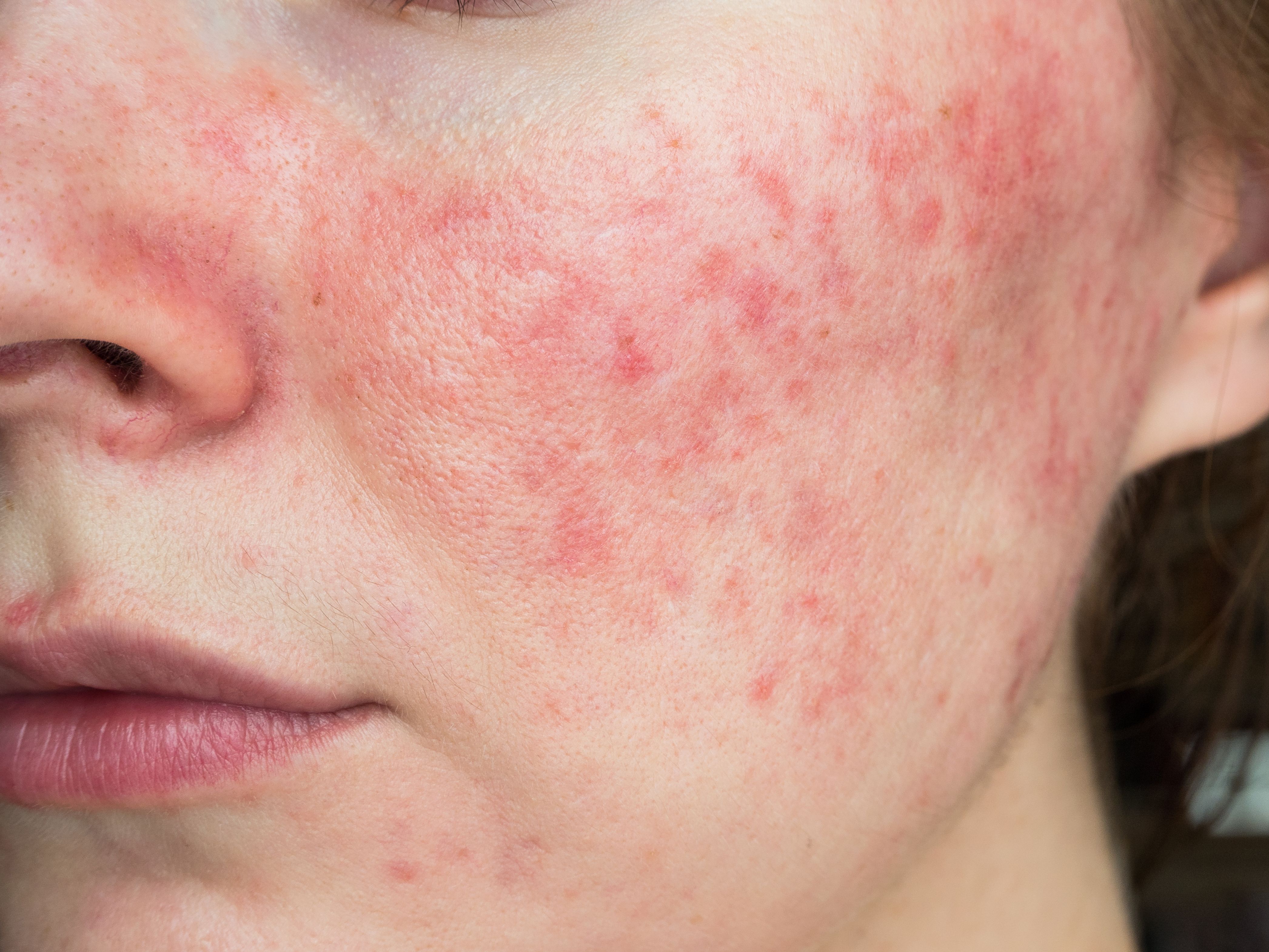- Case-Based Roundtable
- General Dermatology
- Eczema
- Chronic Hand Eczema
- Alopecia
- Aesthetics
- Vitiligo
- COVID-19
- Actinic Keratosis
- Precision Medicine and Biologics
- Rare Disease
- Wound Care
- Rosacea
- Psoriasis
- Psoriatic Arthritis
- Atopic Dermatitis
- Melasma
- NP and PA
- Skin Cancer
- Hidradenitis Suppurativa
- Drug Watch
- Pigmentary Disorders
- Acne
- Pediatric Dermatology
- Practice Management
- Prurigo Nodularis
- Buy-and-Bill
Article
Combination therapy significantly improves rosacea symptoms
Author(s):
A combination of ivermectin 1% cream and oral 40-mg doxycycline has the potential to be an effective therapy for some people with moderate to severe rosacea after the publication of results from a phase 3b/4 study examining the combination’s efficacy and safety compared to ivermectin as a monotherapy.

Combination therapy may offer faster relief to some patients with moderate-to-severe rosacea, according to data from a phase 3b/4 study in the Journal of the American Academy of Dermatology. Investigators evaluated the safety and efficacy of 1% ivermectin cream (Soolantra, Galderma) in combination with doxycycline 40-mg modified release (DMR) capsules compared to ivermectin (IVM) as a monotherapy.1
RELATED: Topical minocycline shows potential for effective papulopustular rosacea treatment
Schaller et al. write that studies investigating combination therapies for rosacea are limited, and there is a “lack of high-level evidence regarding the superiority of a combination therapy approach.” However, the burden of rosacea is significant and data show the condition profoundly impacts self-confidence, self-esteem and, in some, creates a social phobia.2 Finding successful treatment algorithms can positively impact patients’ lives.
The study was a randomized, multicenter, parallel-group, investigator-blind, 12-week comparative clinical trial that recruited 273 adults with severe rosacea and was conducted across 39 sites in the United States, Canada, Hungary, Poland and Czech Republic.
Participants applied IVM once daily in the evening in conjunction with taking either DMR or placebo (PBO) once a day in the morning. They were also instructed to apply rosacea-tailored skin care products during the trial including Cetaphil Redness Relieving Foaming Face Wash (Galderma), Cetaphil Redness Relieving Facial Moisturizer (Galderma) and SPF 20 sunscreen (SPF 30 in Europe).
Twenty-two study participants dropped out during the trial (13 from IVM + placebo and 9 from IVM + DMR), resulting in 251 completing treatment. Reasons for early discontinuation were adverse events (5), subject’s request (9), pregnancy (4), lost to follow-up (1) and other (3).
The study met all primary and secondary endpoints. The combination of IVM and DMR was superior to monotherapy at reducing inflammatory lesions (80.3% vs 73.6% [P = .032]), and resulted in a faster onset of action beginning in week 4. Additionally, the combination therapy increased the number of participants who achieved 100% lesion reduction (17.8% versus 7.2% [P = .006]) and reached an Investigator’s Global Assessment (IGA) score of 0 (11.9% versus 5.1% [P = .043]) at week 12.
In citing recent pooled analysis demonstrating that patients who had IGA scores of 0 (clear) exhibited a better quality of life vs those with IGA scores of 1 (almost clear), the authors noted that “Treating until clear represents an optimal approach to relieving the burden of rosacea and is a rational goal to strive for when evaluating rosacea improvement.”
Both the combination and monotherapy decreased the Clinician’s Erythema Assessment (CEA) score, Dermatology Quality Index Score (DLQI), flushing episodes, stinging, ocular symptoms and burning.
“A surprising outcome from this study was the improvement in ocular signs and symptoms. Despite instructions to avoid application of IVM to the eyelid area, both treatments resulted in a significant reduction in ocular signs and symptoms,” write Schaller et al.
Additionally, the study’s authors write the occurrence of treatment-related adverse events (AEs) for combination therapy (4.4%) was lower compared to monotherapy (7.2%).
“Adding doxycycline 40-mg modified- release capsules, to daily ivermectin 1% cream can produce faster responses, improve response rates, and increase patient satisfaction in cases of severe rosacea compared with 1% ivermectin alone,” write Schaller et al.
MORE: Ultrasound technology may be useful treatment for rosacea
Despite positive results, the authors note limitations included the lack of a control group and that the 12-week trial period restricted the analysis of possible future reoccurrences or improvements of the combination therapy.
“These study results suggest that using a combination of IVM and DMR, each once daily, along with a properly selected skin care regimen, can improve treatment results,” the authors conclude.
References:
1 Schaller M, Kemény L, Havlickova B, et al. A randomized phase 3b/4 study to evaluate concomitant use of topical ivermectin 1% cream and doxycycline 40-mg modified-release capsules, versus topical ivermectin 1% cream and placebo in the treatment of severe rosacea. J Am Acad Dermatol. 2020;82(2):336-343.
2 New rosacea survey shows positive impact of clear skin. National Rosacea Society. https://www.rosacea.org/press/2019/june/new-rosacea-survey-shows-positive-impact-clear-skin. June 3, 2019.






